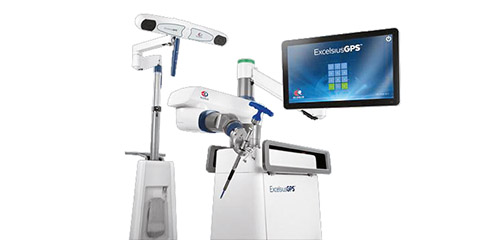

Robotic spine surgery is changing the field of spine surgery. It is making spine surgery safer and more efficient. The robot is not actually doing the surgery. In reality, the surgeon, using the robot’s software and special CT scan imaging, plans the screws and rods before the surgery begins. During surgery, the robotic arm with its attached tube swings and locks into position. With the appropriate trajectory and depth set, I am able to pass a drill and screw through the tube and into a very small incision in the skin. The robot’s image navigation system allows me to watch in real time the position of my instruments within a CT scan image of the bone. This innovative technique allows me to use larger screws and most importantly it increases the safety of screw placement. Another benefit of the robot is that it allows us to place screws with the patient position in different ways. Traditionally, patients had to be laying prone to safely place most screws into the spine. With the robot, those same screws can be placed with the patient lying on his side. This is important because one minimally invasive approach to the spine—called a lateral interbody fusion—allows the surgeon to access the spine through a small incision on the flank. This avoids cutting through the muscles of the back, which can be very painful to the patient. With the robot, I can do a lateral interbody fusion with the patient on his side. Instead of then repositioning the patient and adding surgical time and extra anesthesia to the patient, I can now safely place the screws with the patient lying on his side. Many studies have shown that this so-called “single position” lateral spine surgery is safe, effective and more efficient than the traditional lateral spine surgery. The future is very promising with robotic spine surgery. We are now beginning to see the gain in popularity of custom rods and implants that the robot’s imaging and data system help design. We at the Center for Musculoskeletal Disorders strive to stay in touch with the latest advances in technology for your benefit. Do not hesitate to reach out and make an appointment or call Eliana Kranz, our community liaison, at (201)-510-3777 with any questions.












